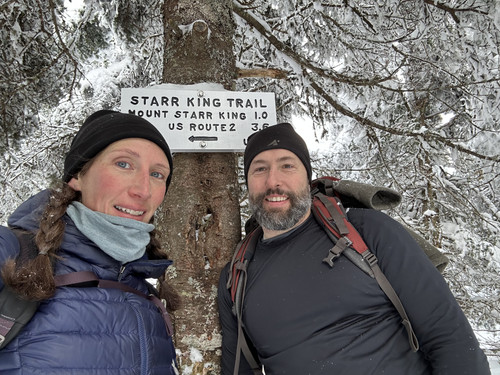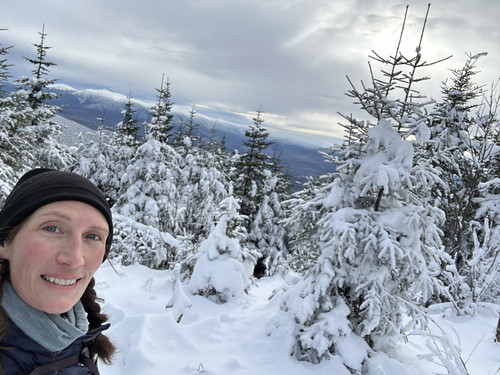- Welcome to FinsandFur.net Forums.
Recent posts
#81
Hunting Photos / Re: Mountain Bucks.
Last post by Okanagan - November 26, 2025, 03:49:41 PMQuote from: FinsnFur on November 24, 2025, 07:14:10 PMThat wood pile though
Clyde, be honest. He blew it in half when he shot it
He's hunting that kind of country with a Sig Cross in .308. Spacegun looking rifle
 that is light weight to carry and still has plenty of punch.
that is light weight to carry and still has plenty of punch. #82
The Tailgate / Frying turkey!
Last post by nastygunz - November 26, 2025, 03:46:55 PM #84
Non Hunting/Fishing Photos / Re: Mountaineers.
Last post by nastygunz - November 26, 2025, 11:30:25 AMTheyre pretty neat critters. Theyre also pretty good hunters,like mini hawks.
#85
Non Hunting/Fishing Photos / Re: Mountaineers.
Last post by Okanagan - November 26, 2025, 10:07:01 AMQuote from: nastygunz on November 25, 2025, 11:50:29 PMIt is a whiskey jack.
Yep. Amazing to me that the same bird is common clear across the continent, on Vancouver Island and all through British Columbia.
#86
The Tailgate / Today in history 11-26
Last post by remrogers - November 26, 2025, 09:57:23 AM1922
Nov 26
Archaeologists enter tomb of King Tut
In Egypt's Valley of the Kings, British archaeologists Howard Carter and Lord Carnarvon become the first souls to enter King Tutankhamen's tomb in more than 3,000 years. Tutankhamen's sealed burial chambers were miraculously intact, and inside was a collection of several thousand priceless objects, including a gold coffin containing the mummy of the teenage king.
When Carter first arrived in Egypt, in 1891, most of the ancient Egyptian tombs had been discovered, and the majority of these had been hopelessly plundered by tomb raiders over the millennia. However, Carter was a brilliant excavator, and in the first years of the 20th century he discovered the tombs of Queen Hatshepsut and King Thutmose IV. Around 1907, he became associated with the Earl of Carnarvon, a collector of antiquities who commissioned Carter to supervise excavations in the Valley of the Kings. By 1913, most experts felt there was nothing in the Valley left to be uncovered. Carter, however, persisted in his efforts, convinced that the tomb of the little-known King Tutankhamen might still be found.
King Tutankhamen was enthroned in 1333 B.C. when he was still a child. He died a decade later at the age of 18 and thus made only a faint impression on the history of ancient Egypt. In the 13th century B.C., Tutankhamen and the other "Amarna" kings were publicly condemned, and most records of them were destroyed–including the location of Tutankhamen's tomb. A century later, in the 12th century B.C., workers building a tomb for Ramses VI inadvertently covered Tutankhamen's tomb with a deep layer of chips, further protecting it from future discovery.
After World War I, Carter began an intensive search for Tutankhamen's tomb and on November 4, 1922, discovered a step leading to its entrance. Lord Carnarvon rushed to Egypt, and on November 23 they broke through a mud-brick door, revealing the passageway that led to Tutankhamen's tomb. There was evidence that robbers had entered the structure at some point, and the archaeologists feared they had discovered yet another pillaged tomb. However, on November 26 they broke through another door, and Carter leaned in with a candle to take a look. Behind him, Lord Carnarvon asked, "Can you see anything?" Carter replied, "Yes, wonderful things."
It was the antechamber of Tutankhamen's tomb, and it was gloriously untouched. The dusty floor still showed the footprints of the tomb builders who left the room more than 3,000 years before. Apparently, the robbers who had broken into Tutankhamen's tomb had done so soon after it was completed and were caught before moving into the interior chambers and causing serious damage.
Thus began a monumental excavation process in which Carter carefully explored the four-room tomb over several years, uncovering an incredible collection of several thousand objects. In addition to numerous pieces of jewelry and gold, there was statuary, furniture, clothes, a chariot, weapons, and numerous other objects that shed a brilliant light on the culture and history of ancient Egypt. The most splendid find was a stone sarcophagus containing three coffins nested within each other. Inside the final coffin, made out of solid gold, was the mummified body of the boy-king Tutankhamen, preserved for 3,300 years. Most of these treasures are now housed in the Cairo Museum.
Nov 26
Archaeologists enter tomb of King Tut
In Egypt's Valley of the Kings, British archaeologists Howard Carter and Lord Carnarvon become the first souls to enter King Tutankhamen's tomb in more than 3,000 years. Tutankhamen's sealed burial chambers were miraculously intact, and inside was a collection of several thousand priceless objects, including a gold coffin containing the mummy of the teenage king.
When Carter first arrived in Egypt, in 1891, most of the ancient Egyptian tombs had been discovered, and the majority of these had been hopelessly plundered by tomb raiders over the millennia. However, Carter was a brilliant excavator, and in the first years of the 20th century he discovered the tombs of Queen Hatshepsut and King Thutmose IV. Around 1907, he became associated with the Earl of Carnarvon, a collector of antiquities who commissioned Carter to supervise excavations in the Valley of the Kings. By 1913, most experts felt there was nothing in the Valley left to be uncovered. Carter, however, persisted in his efforts, convinced that the tomb of the little-known King Tutankhamen might still be found.
King Tutankhamen was enthroned in 1333 B.C. when he was still a child. He died a decade later at the age of 18 and thus made only a faint impression on the history of ancient Egypt. In the 13th century B.C., Tutankhamen and the other "Amarna" kings were publicly condemned, and most records of them were destroyed–including the location of Tutankhamen's tomb. A century later, in the 12th century B.C., workers building a tomb for Ramses VI inadvertently covered Tutankhamen's tomb with a deep layer of chips, further protecting it from future discovery.
After World War I, Carter began an intensive search for Tutankhamen's tomb and on November 4, 1922, discovered a step leading to its entrance. Lord Carnarvon rushed to Egypt, and on November 23 they broke through a mud-brick door, revealing the passageway that led to Tutankhamen's tomb. There was evidence that robbers had entered the structure at some point, and the archaeologists feared they had discovered yet another pillaged tomb. However, on November 26 they broke through another door, and Carter leaned in with a candle to take a look. Behind him, Lord Carnarvon asked, "Can you see anything?" Carter replied, "Yes, wonderful things."
It was the antechamber of Tutankhamen's tomb, and it was gloriously untouched. The dusty floor still showed the footprints of the tomb builders who left the room more than 3,000 years before. Apparently, the robbers who had broken into Tutankhamen's tomb had done so soon after it was completed and were caught before moving into the interior chambers and causing serious damage.
Thus began a monumental excavation process in which Carter carefully explored the four-room tomb over several years, uncovering an incredible collection of several thousand objects. In addition to numerous pieces of jewelry and gold, there was statuary, furniture, clothes, a chariot, weapons, and numerous other objects that shed a brilliant light on the culture and history of ancient Egypt. The most splendid find was a stone sarcophagus containing three coffins nested within each other. Inside the final coffin, made out of solid gold, was the mummified body of the boy-king Tutankhamen, preserved for 3,300 years. Most of these treasures are now housed in the Cairo Museum.
#87
Non Hunting/Fishing Photos / Re: Mountaineers.
Last post by nastygunz - November 25, 2025, 11:50:29 PMIt is a whiskey jack.
#88
Non Hunting/Fishing Photos / Re: Mountaineers.
Last post by FinsnFur - November 25, 2025, 09:05:13 PMJesus thats a lotta snow already! 
Is that a whiskey jack? I'd like to try that sometime. Thats pretty cool

Is that a whiskey jack? I'd like to try that sometime. Thats pretty cool
#89
Non Hunting/Fishing Photos / Mountaineers.
Last post by nastygunz - November 25, 2025, 01:10:15 PM #90
The Tailgate / Today in history 11-25
Last post by remrogers - November 25, 2025, 09:56:43 AM1950
Nov 25
"Storm of the century" hits eastern U.S.
The so-called "storm of the century" hits the eastern part of the United States, killing hundreds and causing millions of dollars in damages, on November 25, 1950. Also known as the "Appalachian Storm," it dumped record amounts of snow in parts of the Appalachian Mountains.
Forming over North Carolina just before Thanksgiving, the storm quickly moved north, striking western Pennsylvania, eastern Ohio and West Virginia. These areas were blanketed with several feet of snow for several days and travel was impossible for nearly a week in some places.
An accompanying windstorm covered a far greater area. New York City recorded a 94 mile-per-hour wind gust. At Bear Mountain, just north of the city, a 140 mph gust was recorded. The winds throughout New England were of hurricane-like force. In addition, high tides and wind-driven surf battered the coastline. On the south edge of the storm, record low temperatures were recorded in Tennessee and North Carolina even without the wind chill. In Mount Mitchell, North Carolina, a temperature of 26 degrees below zero was recorded.
The storm was unique, however, because it featured not only extremely strong winds and heavy snow, but both record high and low temperatures. In Pittsburgh, 30 inches of snow fell in a blinding snowstorm. Further north, Buffalo saw no snow, but experienced 50 mile-per-hour winds and 50-degree temperatures. Paul Kocin, a Weather Channel expert, has said that this storm "had the greatest contrast of weather elements in probably any storm, including the 1993 March Superstorm."
The extreme weather was deemed responsible for the loss of 160 lives over several days.
Nov 25
"Storm of the century" hits eastern U.S.
The so-called "storm of the century" hits the eastern part of the United States, killing hundreds and causing millions of dollars in damages, on November 25, 1950. Also known as the "Appalachian Storm," it dumped record amounts of snow in parts of the Appalachian Mountains.
Forming over North Carolina just before Thanksgiving, the storm quickly moved north, striking western Pennsylvania, eastern Ohio and West Virginia. These areas were blanketed with several feet of snow for several days and travel was impossible for nearly a week in some places.
An accompanying windstorm covered a far greater area. New York City recorded a 94 mile-per-hour wind gust. At Bear Mountain, just north of the city, a 140 mph gust was recorded. The winds throughout New England were of hurricane-like force. In addition, high tides and wind-driven surf battered the coastline. On the south edge of the storm, record low temperatures were recorded in Tennessee and North Carolina even without the wind chill. In Mount Mitchell, North Carolina, a temperature of 26 degrees below zero was recorded.
The storm was unique, however, because it featured not only extremely strong winds and heavy snow, but both record high and low temperatures. In Pittsburgh, 30 inches of snow fell in a blinding snowstorm. Further north, Buffalo saw no snow, but experienced 50 mile-per-hour winds and 50-degree temperatures. Paul Kocin, a Weather Channel expert, has said that this storm "had the greatest contrast of weather elements in probably any storm, including the 1993 March Superstorm."
The extreme weather was deemed responsible for the loss of 160 lives over several days.






